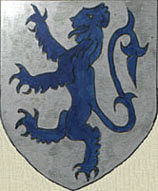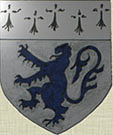 |
SKELTON - IN - CLEVELAND
IN HISTORY
|
 |
"WE WILL REMEMBER THEM"
33670 Driver WALTER SWAINSTON.
2nd Sect, 9th Division, Ammunition Col, Royal Field Artillery.
Killed in action, age 31, on the 18th May 1917.
Born Faceby, N Yorks.
Son of George and Mary Swainston of 21 Richard St, N Skelton, N Yorkshire.
|

Anzin-St Aubin British Cemetery, Arras.
[Shown by kind permission of ww1cemeteries.com].
|

|
FAMILY:-
1901. Walter, aged 15, was living at 21 Richard St and already working down the Ironstone Mines as a labourer. He had been born in Faceby, Yorks.
His father, George, aged 54, was a "Pedlar in tea and drapery" and had been born at Sedgefield. Co Durham.
His mother, Mary, aged 57, had been born in Potto, N Yorkshire. By 1911 she has had 11 children and only 7 are still living.
He had an elder brother aged 25, who worked as an Ironstone Miner and 3 older sisters, Laura 28, Amy 20 and Hilda 18.
1911. The family are still at 21 Richard St. The father is now a Draper and General Dealer.
Walter is a Horse driver in the Ironstone Mine. A son Arthur, age 32, is an Ironstone Miner.
WAR SITUATION:-
Walter's Medal Card shows that he was awarded the 1914/15 Star and was an early Volunteer for service in the War.
He went to France on the 11th May 1915.
Walter's job in the Royal Field Artillery was transporting shells to the guns.
Unless he was wounded out at some time, he must have fought with the 9th Division in 1915 at the Battle of Loos, below Ypres, and then through most of the Battles of the Somme in 1916.
At the time he was killed the 9th Division were fighting in the last stage of the offensive at Arras.
|
The British attacked East of Arras from April 9th to May 16th against the formidable Hindenberg Line, to which the Germans had made a strategic withdrawal earlier in the year.
This operation was part of a larger plan by the French General Nivelle who attacked further South on the Aisne at the same time, with tragic results for the French Infantry, who afterwards staged a partial mutiny.
A great many men were killed and wounded in the British advance, more on average per day than on the Somme.
|

|
General Haig wrote later that Arras was purely a diversion, as his main objective was to advance at Ypres in the offensive that he would launch in July.
By the 18th May 1917, when Walter was killed, the advance had been halted and they were defending the trenches that had been captured against a heavy German response.
MEMORIAL:-
The British Cemetery at Anzin St Aubin lies on the North Western edge of Arras and has 358 burials from the First War.
|
|